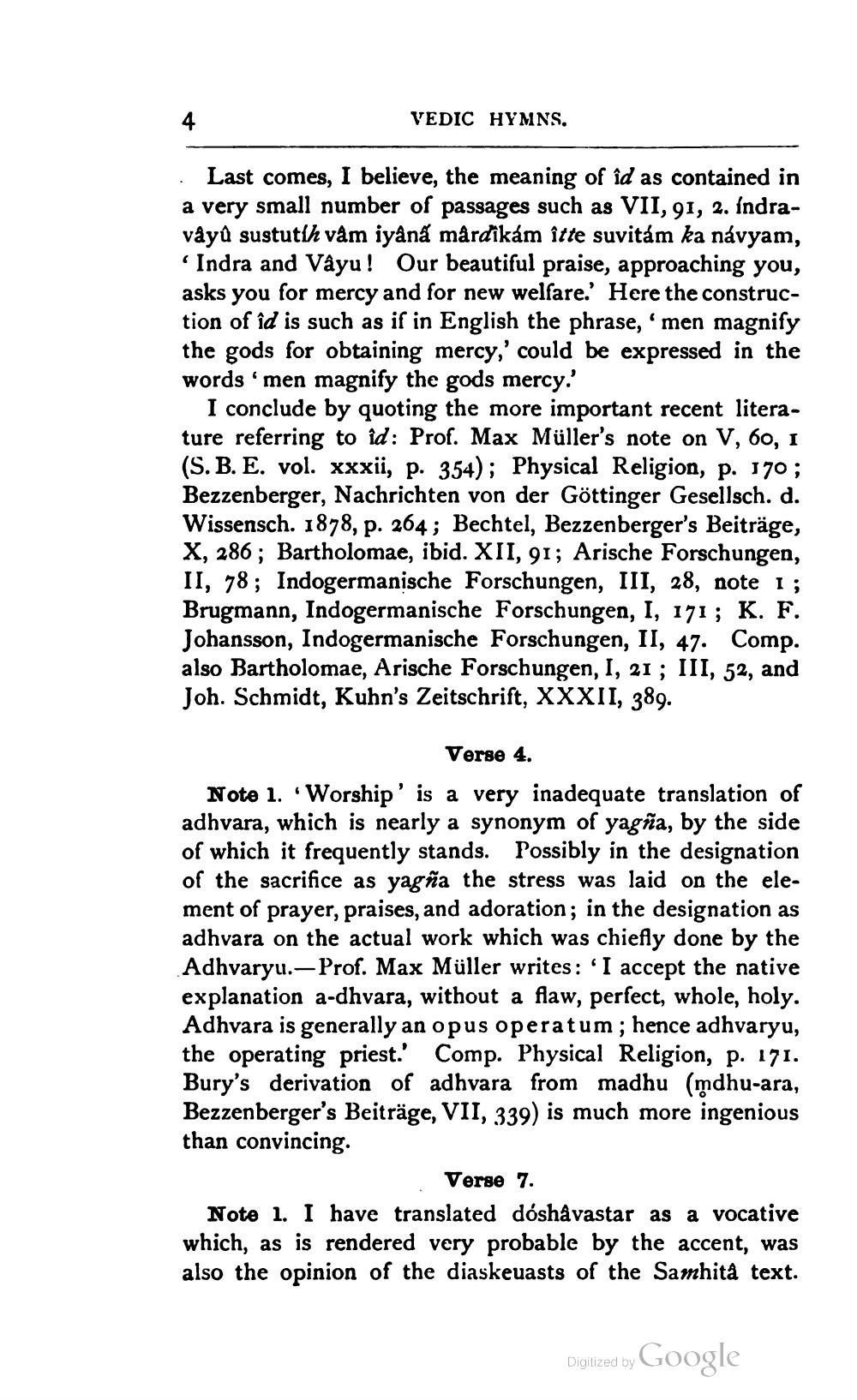________________
VEDIC HYMNS.
Last comes, I believe, the meaning of îd as contained in a very small number of passages such as VII, 91, 2. indravâyû sustutíh vam iyaná mårdîkám îtte suvitám ka návyam, 'Indra and Vayu! Our beautiful praise, approaching you, asks you for mercy and for new welfare.' Here the construction of id is such as if in English the phrase, men magnify the gods for obtaining mercy,' could be expressed in the words 'men magnify the gods mercy'
I conclude by quoting the more important recent literature referring to id: Prof. Max Müller's note on V, 60, I (S.B. E. vol. xxxii, p. 354); Physical Religion, p. 170; Bezzenberger, Nachrichten von der Göttinger Gesellsch. d. Wissensch. 1878, p. 264; Bechtel, Bezzenberger's Beiträge, X, 286; Bartholomae, ibid. XII, 91; Arische Forschungen, II, 78; Indogermanische Forschungen, III, 28, note 1; Brugmann, Indogermanische Forschungen, I, 171; K. F. Johansson, Indogermanische Forschungen, II, 47. Comp. also Bartholomae, Arische Forschungen, I, 21; III, 52, and Joh. Schmidt, Kuhn's Zeitschrift, XXXII, 389.
Verse 4.
Note 1. Worship’ is a very inadequate translation of adhvara, which is nearly a synonym of yagña, by the side of which it frequently stands. Possibly in the designation of the sacrifice as yagña the stress was laid on the element of prayer, praises, and adoration; in the designation as adhvara on the actual work which was chiefly done by the Adhvaryu.-Prof. Max Müller writes: 'I accept the native explanation a-dhvara, without a flaw, perfect, whole, holy. Adhvara is generally an opus operatum; hence adhvaryu, the operating priest.' Comp. Physical Religion, p. 171. Bury's derivation of adhvara from madhu (mdhu-ara, Bezzenberger's Beiträge, VII, 339) is much more ingenious than convincing.
Verse 7. Note 1. I have translated dóshåvastar as a vocative which, as is rendered very probable by the accent, was also the opinion of the diaskeuasts of the Samhità text.
Digitized by Google




